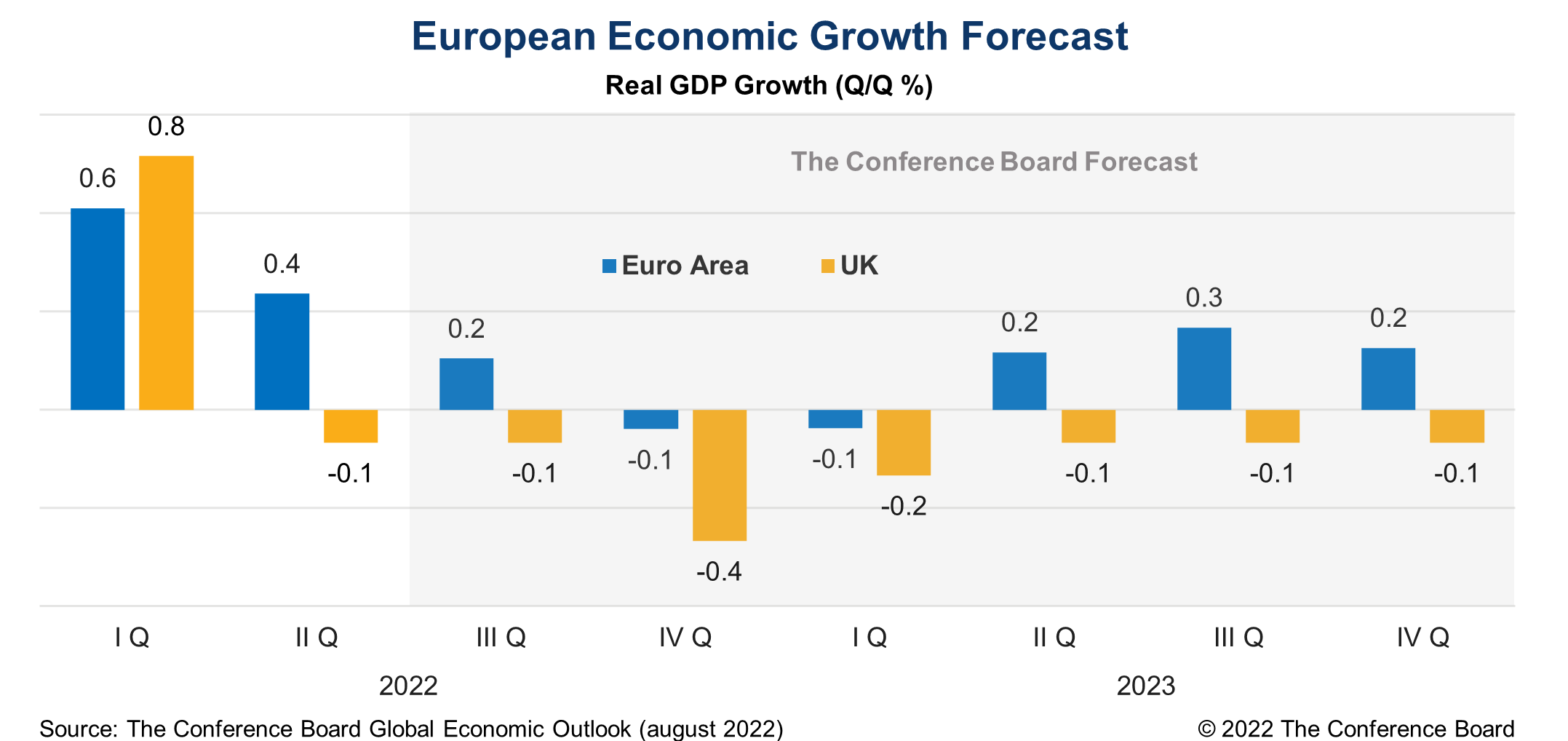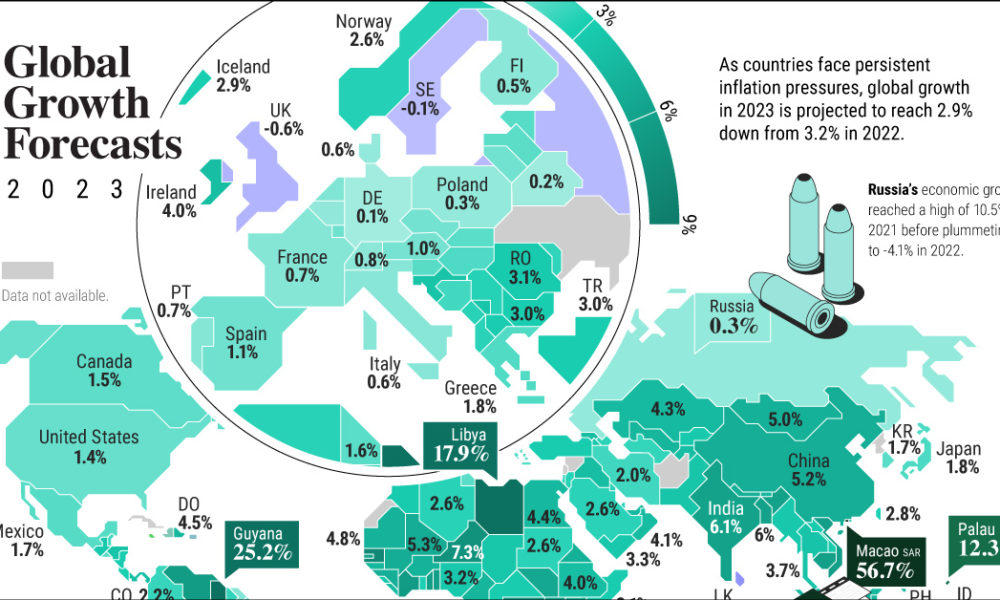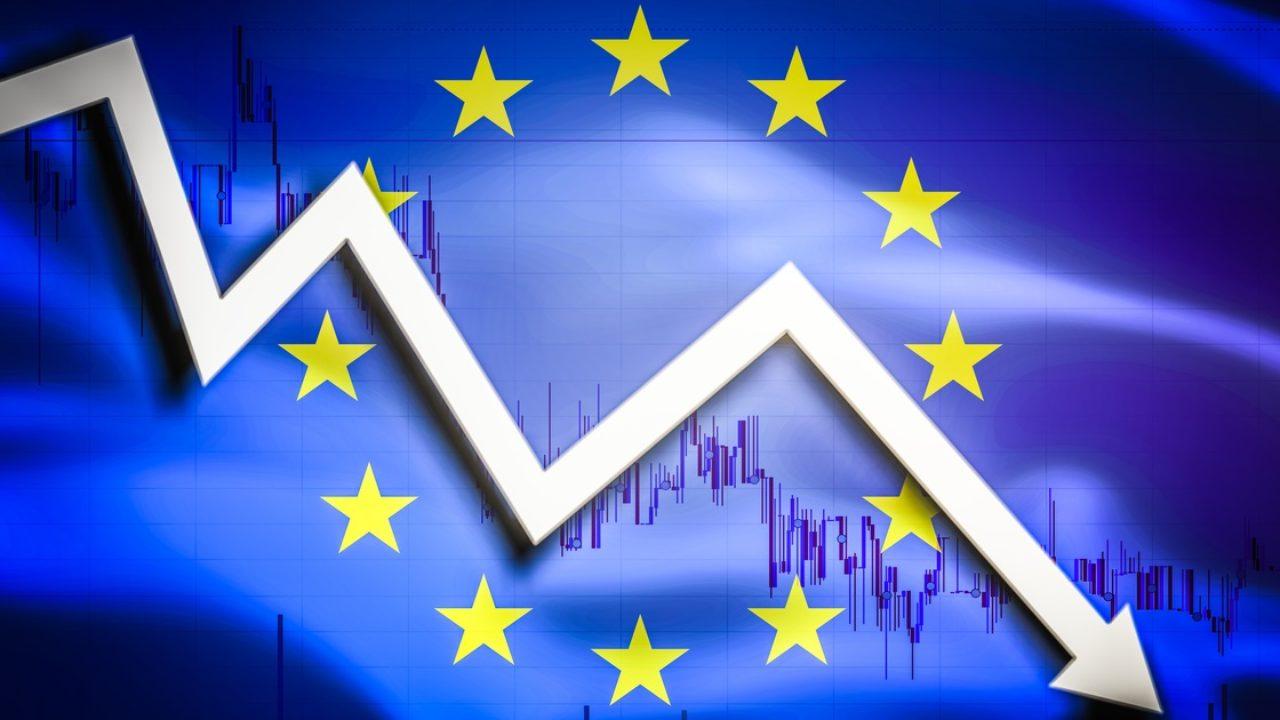The eurozone, consisting of 20 countries that use the euro as their currency, has encountered a challenging start to 2023. Figures from the EU’s statistical agency, Eurostat, revealed that the region entered a technical recession, with a contraction of 0.1 percent for two consecutive quarters. This revision by Eurostat follows a prior forecast that predicted slight growth but was adjusted downward after Germany, the economic powerhouse of the eurozone, announced its recessionary status. The European Central Bank’s tightening monetary policy, inflationary pressures, and the impact of surging energy prices have all contributed to the recessionary conditions.
The Build-up to Recession:
Inflationary Pressures and Rising Interest Rates
The eurozone faced challenges stemming from inflation and subsequent higher interest rates. The European Central Bank responded by increasing key rates by 3.75 percentage points since embarking on a monetary tightening campaign in July of the previous year. 1.2 Impact of Surging Energy Prices: The escalation of energy prices, triggered by Russia’s conflict with Ukraine, exerted additional strain on the eurozone economies, leading to increased inflationary pressures and reduced consumer demand.

Buy Prime Test Series for all Banking, SSC, Insurance & other exams
Contraction in GDP: Revised Economic Forecasts
Eurostat revised its earlier estimates, downgrading the growth forecast for the final quarter of 2022 and the first quarter of 2023 from 0 percent and 0.1 percent growth, respectively, to 0.1 percent contractions in both periods. 2.2 Threshold for Technical Recession: The consecutive quarters of economic contraction crossed the threshold for a technical recession, further highlighting the economic challenges faced by the eurozone.
Implications for the European Economy: Impact on Growth Forecasts
The latest figures cast doubt on more optimistic growth predictions for the entire year of 2023. The European Commission, which forecasted 1.1 percent growth in mid-May across the 20 eurozone countries, may need to reassess its projections. 3.2 Economist Predictions: Economists such as Charlotte de Montpellier from ING Bank anticipate a lower growth figure of only 0.5 percent for the eurozone in 2023. The persistently negative data, including weak German industrial production and new orders, suggests that the European economy is currently experiencing stagnation.
Factors Contributing to the Recession: Energy Shock and Consumer Confidence:
The surge in gas and oil prices over the past year significantly impacted household confidence and forced a reduction in consumption, thereby affecting domestic demand within the eurozone.

Monetary Policy Tightening
The combined effects of inflation and rising interest rates have heavily hit domestic demand, exacerbating the economic slowdown.
Inflationary Pressure
Headline inflation for the eurozone reached 6.1 percent in May, far exceeding the European Central Bank’s target of 2.0 percent. ECB Chief Christine Lagarde has highlighted the persistently high inflation rate and hinted at a potential smaller rate increase.
External Factors
A slowdown in the United States and a weaker-than-expected recovery in China have negatively impacted exports, adding to the challenges faced by the eurozone economies.

Here is a brief overview of some significant economic recessions in history
-
The Great Depression (1929-1939): One of the most severe and prolonged economic downturns in history, the Great Depression originated in the United States with the stock market crash of 1929. It quickly spread worldwide, leading to widespread unemployment, bank failures, and a sharp decline in international trade.
- Oil Crisis Recession (1973-1975): The 1973 oil crisis, triggered by the OPEC oil embargo, resulted in a sharp increase in oil prices, causing significant disruptions to economies heavily reliant on oil. The global recession that followed led to high unemployment rates and stagflation (a combination of stagnant economic growth and high inflation) in many countries.
- Early 1980s Recession: This recession was primarily driven by efforts to combat high inflation rates. Central banks, including the U.S. Federal Reserve, implemented tight monetary policies, leading to a significant increase in interest rates. This, in turn, resulted in a severe recession marked by high unemployment and bankruptcies.
- Dot-Com Bubble Burst (2000-2002): The rapid growth of internet-based companies in the late 1990s led to a speculative bubble in technology stocks. However, as the bubble burst, many dot-com companies failed, leading to a stock market crash and a subsequent economic downturn.
- Global Financial Crisis (2007-2009): The global financial crisis, also known as the Great Recession, originated in the United States with the collapse of the subprime mortgage market. The crisis quickly spread worldwide, causing a severe banking and financial sector crisis. Governments implemented massive stimulus packages and monetary easing measures to prevent a complete collapse of the financial system.
- Eurozone Debt Crisis (2010-2014): The sovereign debt crisis in several Eurozone countries, including Greece, Portugal, Ireland, Spain, and Italy, led to a period of economic turmoil. High levels of public debt, coupled with banking system vulnerabilities, resulted in bailouts, austerity measures, and economic contractions in these countries.
Find More News on Economy Here



 Indian Olympic Medal Winners List Till N...
Indian Olympic Medal Winners List Till N...
 Who is the Inventor of the Gramophone?
Who is the Inventor of the Gramophone?
 HS Dhaliwal Appointed New DGP Of Andaman...
HS Dhaliwal Appointed New DGP Of Andaman...
